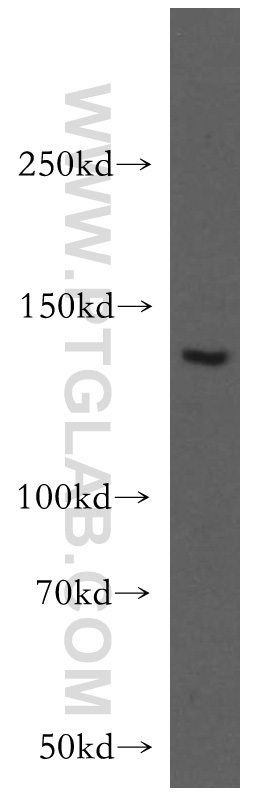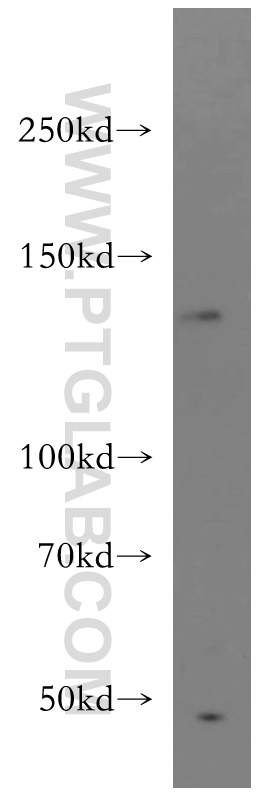BAI3-Specific Polyclonal antibody
BAI3-Specific Polyclonal Antibody for WB, ELISA
Host / Isotype
Rabbit / IgG
Reactivity
human, mouse, rat
Applications
WB, ELISA and More (1)
Conjugate
Unconjugated
验证数据展示
经过测试的应用
| Positive WB detected in | HEK-293 cells, Jurkat cells |
推荐稀释比
| Application | Dilution |
|---|---|
| Western Blot (WB) | WB : 1:500-1:1000 |
| It is recommended that this reagent should be titrated in each testing system to obtain optimal results. | |
| Sample-dependent, Check data in validation data gallery. | |
发表文章中的应用
| WB | See 1 publications below |
| IF | See 1 publications below |
产品信息
19789-1-AP targets BAI3-Specific in WB, IF, ELISA applications and shows reactivity with human, mouse, rat samples.
| Tested Applications | WB, ELISA Application Description |
| Cited Applications | WB, IF |
| Tested Reactivity | human, mouse, rat |
| Cited Reactivity | mouse |
| Immunogen | Peptide 种属同源性预测 |
| Host / Isotype | Rabbit / IgG |
| Class | Polyclonal |
| Type | Antibody |
| Full Name | brain-specific angiogenesis inhibitor 3 |
| Synonyms | BAI3, BAI3-Specific, brain angiogenesis inhibitor 3, KIAA0550 |
| Calculated Molecular Weight | 172 kDa |
| Observed Molecular Weight | 135-140 kDa |
| GenBank Accession Number | NM_001704 |
| Gene Symbol | BAI3 |
| Gene ID (NCBI) | 577 |
| RRID | AB_10666850 |
| Conjugate | Unconjugated |
| Form | Liquid |
| Purification Method | Antigen affinity purification |
| UNIPROT ID | O60242 |
| Storage Buffer | PBS with 0.02% sodium azide and 50% glycerol pH 7.3. |
| Storage Conditions | Store at -20°C. Stable for one year after shipment. Aliquoting is unnecessary for -20oC storage. |
背景介绍
BAI3, also named as KIAA0550, belongs to the G-protein coupled receptor 2 family and LN-TM7 subfamily. BAI3 might be involved in angiogenesis inhibition and suppression of glioblastoma. This antibody is specific to BAI3.
实验方案
| Product Specific Protocols | |
|---|---|
| WB protocol for BAI3-Specific antibody 19789-1-AP | Download protocol |
| Standard Protocols | |
|---|---|
| Click here to view our Standard Protocols |
发表文章
| Species | Application | Title |
|---|---|---|
Behav Brain Res miR-142 downregulation alleviates the impairment of spatial learning and memory, reduces the level of apoptosis, and upregulates the expression of pCaMKII and BAI3 in the hippocampus of APP/PS1 transgenic mice. |

